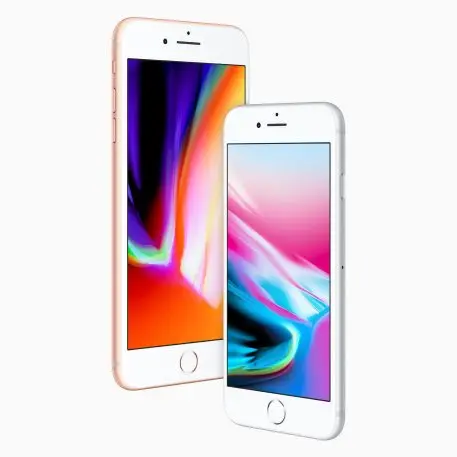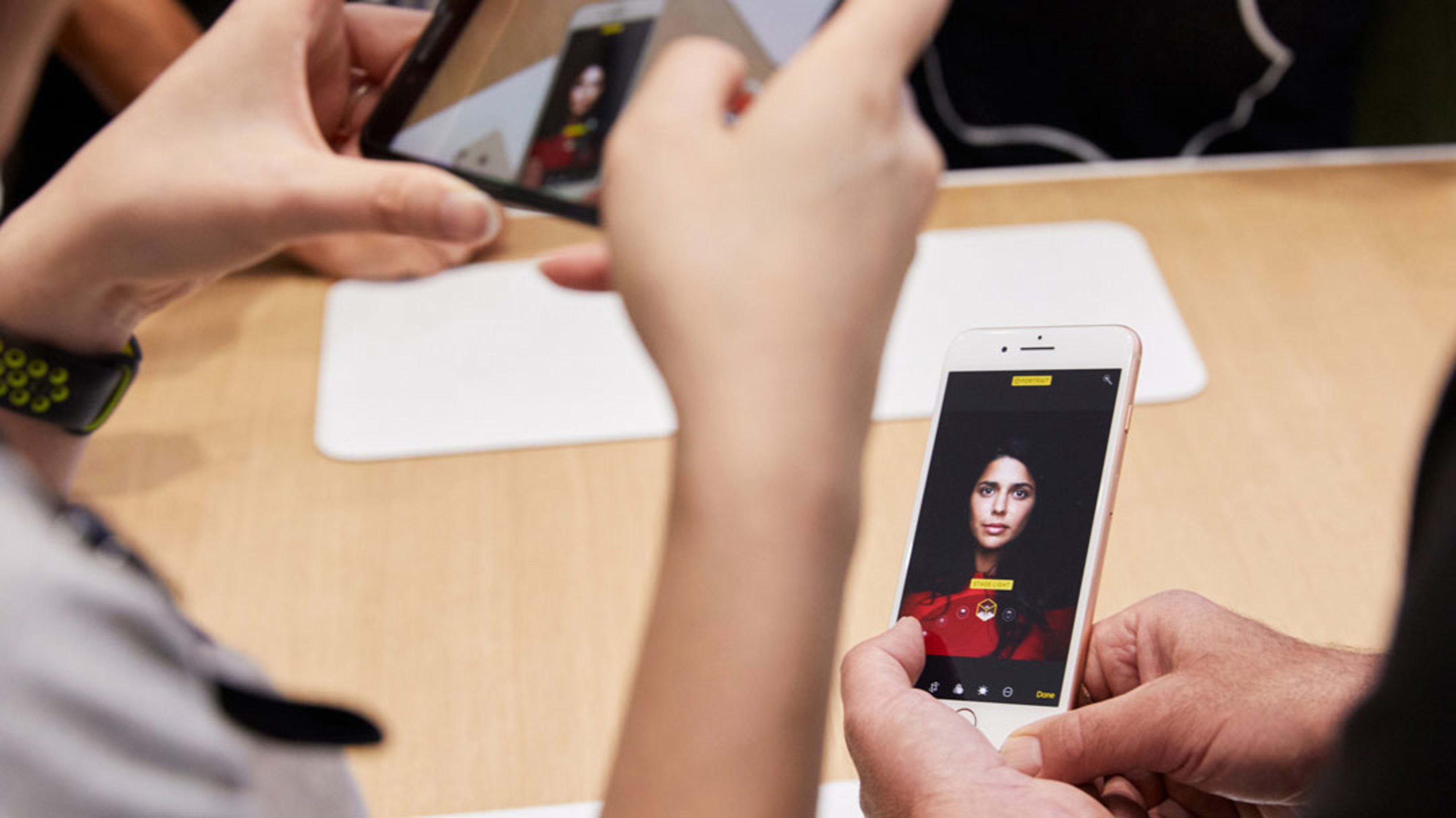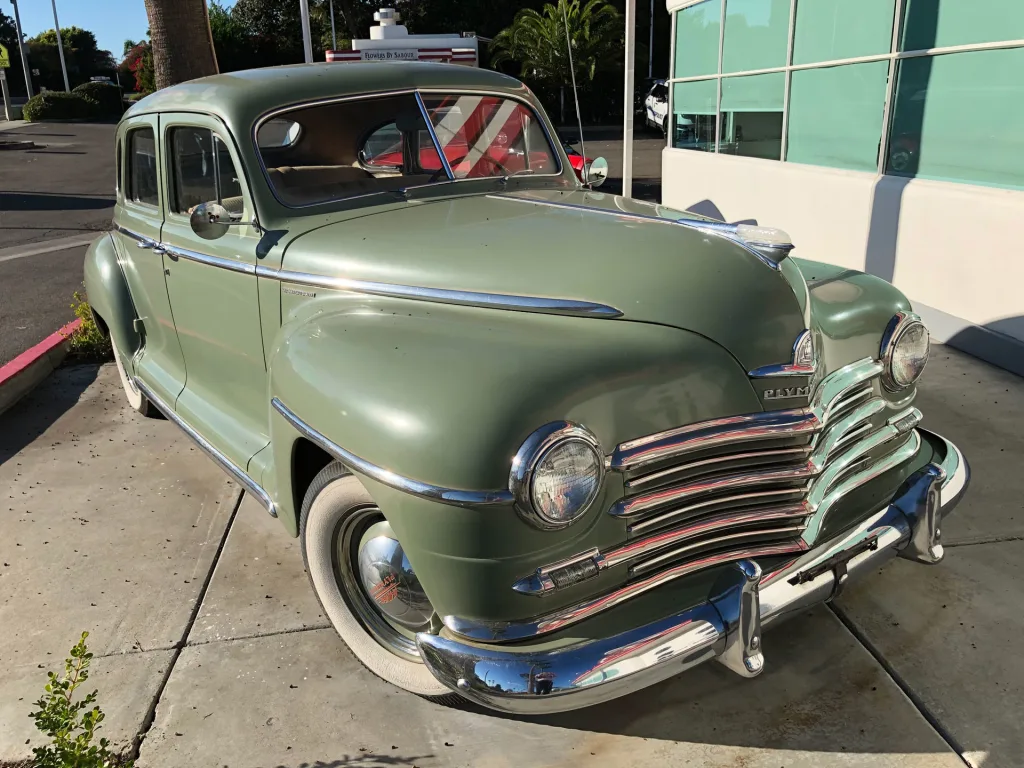Three new iPhones. Two different on-sale dates. By offering more choice than ever, Apple has also made the buying decision tricky in ways it never was before.
The company released two phones, the iPhone 8 and iPhone 8 Plus, in late September, and will release a third, the iPhone X, this coming Friday. The 8 and 8 Plus, though full of improvements, build directly on the bones of last year’s iPhone 7 and 7 Plus. But the X, with its new form factor, Face ID security, OLED display, and notch, may be the newest new iPhone since the original 2007 model.
While waiting for the iPhone X to arrive, we ditched our old phones for review units, provided by Apple, of the iPhone 8 and iPhone 8 Plus, respectively. Then we shared notes on the experience of living with phones that emphasize evolution over revolution.

Glass, Front And Back
Mark Sullivan: I have reluctantly put aside my beloved iPhone 6s, which has stood by me in everything from long conference calls to camping trips in Montana. Replacing it (at least for a time) is the new iPhone 8. It is a substantial, if unsurprising, upgrade from the iPhone 7 and an even better one from the iPhone 6s.
One thing I immediately like about the iPhone 8 is the glass front and back. My iPhone 6s has taken quite a few falls, in part because the aluminum around its sides and back is a bit slippery. The iPhone 8 has aluminum sides, but the glass on the back is grippier than the iPhone 6s’s aluminum. I don’t think I’ll be dropping it as much. Fortunately I never dropped my iPhone 6s into water, but if that happens with the iPhone 8, its IP67 water resistance rating might bail me out.
Harry McCracken: I’ve not-so-reluctantly switched out my iPhone 7 Plus—which, since it’s less than a year old—still feels like my new phone—for an iPhone 8 Plus. Since the 7 Plus is a generation ahead of your 6s, I should theoretically be less struck by the upgrades in the 8 Plus than you are by the ones in the 8.
From an aesthetic standpoint, I like the glass back. Apple did glass backs before with the iPhone 4 and 4s, but these ones feel considerably more upscale: They reflect light beautifully, and seem to be smudge- and dirt-repellent. The phone Apple loaned me happens to be gold, and though I’d never even for a nanosecond considered buying a gold phone, it’s more tasteful than I expected. Even after a few weeks, it feels like an upgrade from the aluminum-clad 7 Plus.
Even though Apple claims that the new iPhones have the most durable glass ever put on a smartphone, I’m still wary about any phone that, if dropped, stands a chance of shattering no matter which side it falls on. The various unscientific breakage tests that others have performed haven’t calmed my nerves. But for the record, my 8 Plus slipped out of my hand and took a tumble of about 3 feet onto a hard wooden floor, falling on its back. I was prepared for the worst. But it was fine.
One thing that’s only recently dawned on me, oddly enough: If you put your phone into a protective case, as most people do, it doesn’t much matter what the back looks and feels like. I was smitten with the black finish of my iPhone 7 Plus, but have only rarely seen it since I snapped the phone into a leather case.
MS: Ah yes, the problem of the case. Using a protective case is a practical thing to do, and surely can extend the life of the phone. But just think of all the work Jony Ive and his minions did–the blood, sweat, and tears expended–to make the thing beautiful to behold. And it’s all obscured the minute the case goes on. Instead we get to look at the design aesthetic of some company called OtterBox.
The Camera(s)
HM: The thing that struck me about the iPhone 8 Plus camera is that it’s the most goof-proof smartphone camera I’ve ever used. Nearly every photo comes out looking nice, without me doing anything other than pointing and shooting. In murky environments where the 7 Plus struggled to focus at all, the 8 Plus let me pop off shots as quickly as I can in much brighter lighting.
One night, I walked around downtown San Francisco snapping photos with both the iPhone 7 Plus and 8 Plus. When I got home, iCloud had intermingled them, but it was almost always obvious which pictures came from which phone. The 8 Plus photos were surprisingly crisp and presentable, given the available light; the 7 Plus photos were often too blurry to keep.
I enjoyed playing with the new Portrait Lighting effects, though I found that the results were hit-or-miss. (The spotlight tended to black out parts of the subject as well as the background.) But hey, the feature is still a preview, and may improve–as last year’s Portrait Mode has since its original beta release. The concept of simulating lighting through computer science is a powerful one, and probably a sign of things to come as math makes up for the limitations of tiny camera sensors and flashes.
MS: It’s interesting to look at how well smartphone cameras do in limited or artificial light. It seems like it’s in that setting that many smartphone cameras fail. The fact that low-light shooting has been so slow to improve suggests it’s a difficult engineering problem, given the size constraints of smartphones.
Moving from the iPhone 6s up to the iPhone 8, the camera upgrade is apparent but not mind blowing. It’s about what I expected. The 8 has a single 12-megapixel camera on the back, and none of the fancy dual-camera zooms and portrait modes of the larger iPhone 8 Plus. The photos I’ve shot still have the familiar graininess upon zoom-in, but less so than photos shot with my iPhone 6s.
This may be because Apple has come a long way since 2014 in its image stabilization technology. The iPhone 6s is very unforgiving in low light conditions, in part because an unsteady hand only amplifies the graininess that comes from low light.
I’m more impressed with the iPhone 8 Plus camera, which I also tried. It’s the first smartphone camera I’ve used that captures scenes and especially people in an aesthetically satisfying way. The 8 Plus camera seems good enough to get at the truth of a place or person, or at least close enough to justify keeping the photo for a long time. I can’t really say that for shots I’ve taken with other smartphones.
During a Seattle trip, I took some evening outdoor shots of the Space Needle using both the iPhone 8 and the iPhone 8 Plus, and the difference was very clear. The 8 Plus photos were clear and captured the details of the brightly lit structure against the deep blue sky. The iPhone 8, on the other hand, couldn’t seem to deal with the light emitting from the Needle–the details were completely washed out in white light.
What I really want is an iPhone that’s the pocketable size of the 8 with a similar screen size, yet which has dual cameras on the back. Looking around at the other phones on the market with dual cameras, they’re mostly large phones. The dual camera assembly requires extra space. But dual-camera phones are getting smaller: Huawei now has one with a 5.1-inch display. And the iPhone X will pack dual cameras into a phone that’s bigger than the iPhone 8, but more svelte than the 8 Plus.

The Present And Promise Of Wireless Charging
HM: Here’s proof that plugging a phone into a cable has never struck me as a burden: Several days after I started using the iPhone 8 Plus, I realized I’d forgotten to unbox the Belkin wireless charging pad that Apple provided. Once I started using it, I discovered you have to position the phone just so on the pad for it to work. (I’m also pretty sure that my cat hopped onto my nightstand and nudged the phone out of the pad’s sweet spot at least once.)
Nevertheless, I am happy to see wireless charging finally arrive on the iPhone—not for its immediate benefit, but for its potential. Apple’s AirPower pad, due in 2018, will let you charge an iPhone, an Apple Watch, and AirPods, and dispensing with three cables is more alluring than dispensing with one. More important, Apple’s support for the technology may finally kickstart the long-promised scenario in which every place from coffee shops to hotel rooms offer charging surfaces. If you could top off your battery almost anywhere without thinking about it, that would come awfully close to providing the effect of a bottomless battery.
MS: The charger Apple provided has already been shoved to a remote corner of my desk. It still seems pretty easy to just plug in the Lightning cable. And I also found that I have to position the phone in the middle of the Belkin pad before it will charge. A half inch to the right or left, and the phone won’t charge.
I also discovered that wireless charging is painfully slow, especially compared to some of the “quick charge” technologies now baked into Samsung and OnePlus phones. The receiver inside the iPhone 8 is capable of only 5 watts, so charging on the pad is something you’d want to do overnight rather than sneaking a quick recharge during the day
I do agree with you, Harry, that the real utility of wireless charging will become clear next year when Apple releases its multi-iDevice charging pad. It will be a little faster than the Belkin and Mophie pads–improving from 5W to 7.5W, I’m told–but not that much zippier. Still it will be an easy place to dump your Watch, phone, and AirPods for an overnight charge.
I heard some reports of rapid battery depletion in the iPhone 8 (compared to earlier iPhones), but I haven’t seen that. The battery seems to discharge at about the same rate as the one in my iPhone 6s.
HM: I also noticed no change in the iPhone 8 Plus’s battery life compared to the 7 Plus—which is to say that it got through all but the heaviest days of usage without conking out. (The one time I did deplete it entirely, I used an Apple Watch Series 3 with LTE to make a call to schedule a dentist’s appointment.) With most of its devices, Apple decides how many hours of battery life is desirable, and then hits that goal. No less, no more.
The Kitchen Sink
HM: Among the most Apple-esque things Apple does is fuss over its devices’ display quality in ways that probably don’t move additional units–and don’t in themselves warrant an upgrade–but do make for a better experience. The iPhone 8 and 8 Plus both have True Tone, which debuted with last year’s iPad Pro. The technology uses light sensors to measure the color temperature of your environment and tweak the screen to match, an effect that makes the display look less like a glowing, synthetic piece of technology and is especially obvious in apps with a lot of white space, like e-book readers.
As usual, Apple is touting its new chip–the A11 “Bionic”–with benchmarking claims that are hard to translate into real-world benefits, such as four efficiency cores that are up to 70% faster and two performance cores that are up to 25% faster. And as usual, I did notice that the new phone is snappier than its predecessor. It’s not an argument for upgrading from a year-old iPhone, but it does auger well for the new phones’ ability to run more demanding apps in the years to come.
Some of those apps will incorporate Apple’s ARKit augmented-reality functionality to meld the real world as seen through a smartphone camera with digital imagery generated by the A11 chip. At the moment, though, ARKit still feels like a technology demo that has yet to prove it’s more than a gimmick. None of the apps I’ve tried that use it seem poised to become Pokémon Go-like phenomenons, and I was disappointed by some of the ones I tried, such as ruler apps that turned out to be more trouble than they were worth. (I’d hoped that Apple would release a clever ARKit app or two of its own to show the rest of the world how it’s done, but it hasn’t.)

The iPhone X Cometh
MS: I was always conscious of the iPhone X while checking out the iPhone 8. It would be nice to just forget the X exists and review the iPhone 8 line on its own merits, but that’s not very meaningful because consumers won’t be looking at it that way.
So there’s a glass-half-full way of looking at the iPhone 8. It feels like an iPhone. It’s a solid continuance of a grand tradition. It has a home button. But inside the phone you get a lot more processing power, an improved display, and a price tag, starting at $699, that isn’t too daunting.
The glass-half-empty take is that the iPhone 8 seems old hat. Now that I’ve seen the edge-to-edge display on the iPhone X, the big white “chin” and “forehead” on the iPhone 8 seem, well, big. I notice the bezel at the edges of the display more.
HM: The impending arrival of the iPhone X does loom over both of these phones, especially the iPhone 8 Plus, since it’s been the premium model until now. It’s impossible to provide anything like complete buying advice until we get to try the X—and, especially, get to experience Face ID for ourselves.
Upgrading a year-old iPhone is always an act of personal luxury rather than necessity, and the iPhone X is poised to be a far more striking step up from the iPhone 7 and 7 Plus than the 8 and 8 Plus are. It’s the iPhone you want if owning the latest iPhone matters to you in itself, and you can justify the cost (even if you pay it chopped into 24 monthly chunks).
If, however, you’re considering a new iPhone on more purely practical grounds–because the one you’ve got is at least a couple of years old and is feeling its age–the iPhone 8 and 8 Plus are at least as serious contenders as the flashier, pricier X. They offer clear improvements on past models in a package that’s reassuringly familiar. For plenty of rational consumers who aren’t gadget nerds, that’s more exciting than raw, untested newness.
This has been fun, Mark. Let’s compare notes once we’ve gotten some serious hands-on time with the iPhone X, and see if that changes any of our conclusions.
Recognize your brand’s excellence by applying to this year’s Brands That Matter Awards before the early-rate deadline, May 3.








